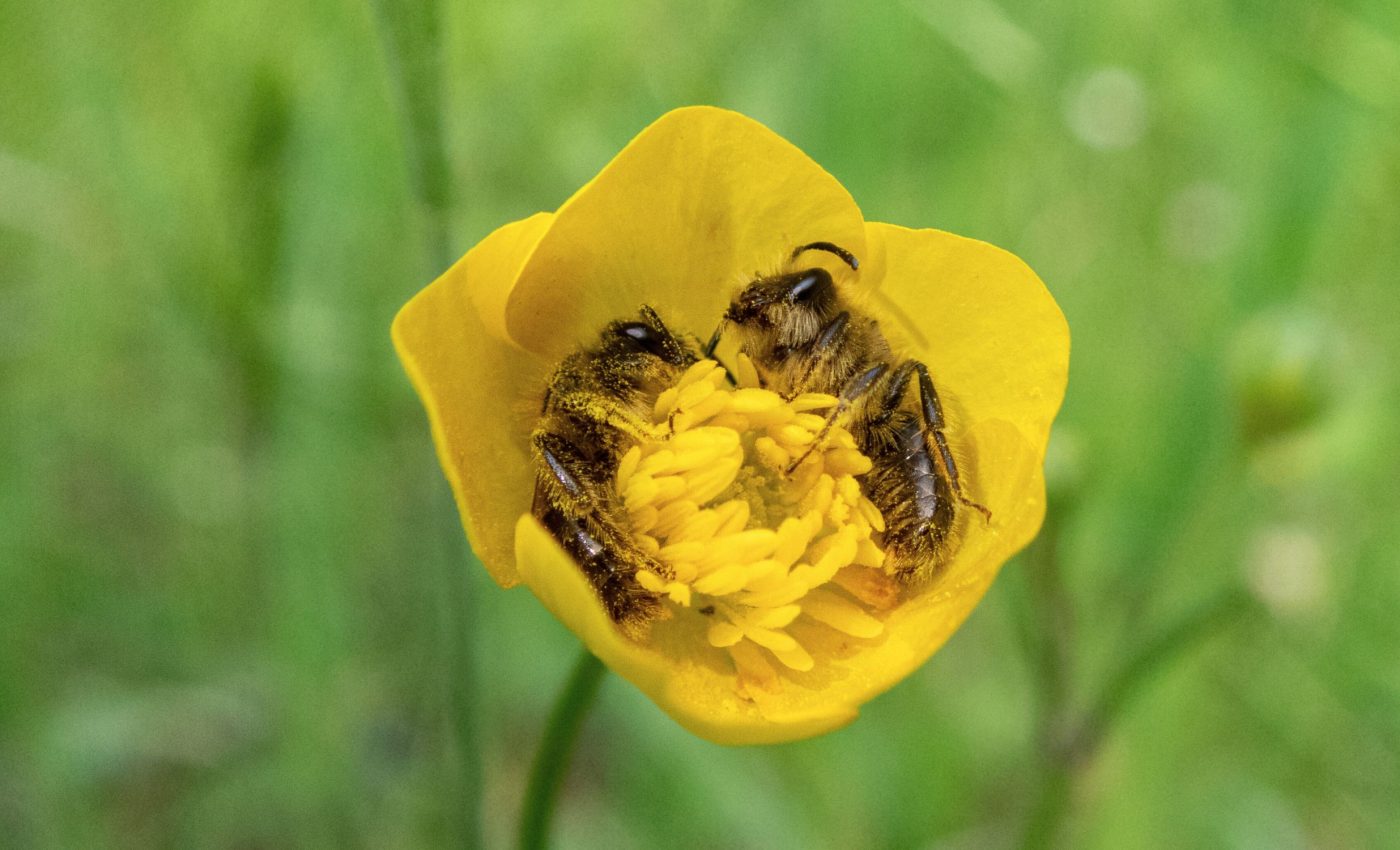
Bees sleep like humans, with similar brain patterns
Sleep is more than rest. It’s a time when the brain, whether in bees or mammals, processes information, strengthens memories, and prepares for the next day. For years, scientists have studied sleep in mammals, revealing intricate brain patterns during rest.
Now, researchers at the University of Trento have turned their attention to a less obvious subject: bees. What they discovered blurs the line between insect and human sleep.
Studying sleep in bee brains
Imagine a honey bee, immobilized and connected to a two-photon microscope, its delicate head under the watchful eye of scientists. At night, when bees naturally enter a resting state, researchers captured the silent flickering of neurons in their antennal lobes – the brain’s olfactory command center.
“For the first time, we have observed what happens in the brain of sleeping honey bees and we have identified neuronal network states which are signatures of sleep,” says Albrecht Haase, the principal investigator.
And what did they find? As the bee lay still, its neuronal networks switched to a quieter, synchronized mode. A sleep state and a mode eerily similar to what happens in human brains.
Scent processing during sleep
Close your eyes and take a deep breath. When you’re asleep, your brain doesn’t pay as much attention to smells as it does when you’re awake.
The same thing happens to bees. While they rest, the part of their brain that detects scents slows down, focusing only on important smells.
“We have shown that, in resting states, the brain networks of bees switch to a synchronised and reduced information processing mode, similar to what happens in mammals,” Haase explains.
Data collected over several nights revealed that bees, while asleep, enter a state of decreased sensory perception. The brain’s noise dials down, and neuronal connections slip into a slower, more rhythmic pattern.
Detecting sleep patterns in bees
The researchers decoded the neural signatures of sleep. By feeding the neural data into machine learning algorithms, they trained a model to differentiate between active and resting states. The accuracy? A staggering 93%.
Glomeruli – tiny clusters of neurons in the antennal lobes – synchronized their activity during sleep, forming patterns reminiscent of sleep spindles in mammals.
The antennal lobe, which usually fires in response to scent signals, now pulsed in unison, like a choir singing in a single pitch.
Simulating bee sleep
Researchers built a computational model, a virtual bee brain, designed to mimic the observed sleep patterns. The model simulated glomeruli firing as sleep deepened, with inhibitory connections between neurons weakening.
It was a revelation. By reducing synaptic conductance, the model replicated the sleep state seen in bees. The glomeruli pulsed together, but their connections slackened. The result? A network tuned to silence, primed to rest.
GABA’s role in bee sleep
What makes the brain slow down during sleep? It could be GABA, a chemical in the brain that helps calm nerve cells. In humans, GABA reduces brain activity during sleep. The same thing happens in bees.
The study found that during sleep, inhibitory neurons in the antennal lobes – which release GABA – dial down their signals. This reduction synchronizes glomerular networks, linking it to sleep states observed in higher animals.
How stress affects sleep
Bees do more than make honey. They pollinate crops, keeping ecosystems balanced. But what happens when their sleep is disrupted? Pesticides, climate change, and habitat loss can alter sleep patterns, potentially compromising their sensory processing.
“This work is important for basic neuroscience, but it also contributes to research on the global concern for pollinator health,” noted Haase.
If sleep consolidates memory, disrupted sleep could affect how bees remember floral routes, communicate through waggle dances, or respond to danger. The implications are profound.
Sleep and memory in bees
Picture a bee, navigating a field of flowers. It remembers where to find nectar, a mental map imprinted during sleep.
“During sleep, for example, bees consolidate the memory that allows them to build a cognitive map that they use to navigate to food sources,” Haase says.
In the study, researchers observed that during sleep, neural activity in the antennal lobes replayed patterns seen during wakefulness, as if the brain were rehearsing the day’s events. Sleep, it seems, is more than a break – it’s a second chance to learn.
Evolution of sleep patterns
What does bee sleep tell us about human sleep? More than you might think. The study suggests that sleep patterns evolved early, long before mammals roamed the Earth.
“Honey bees offer the opportunity to study sleep at the level of individual neurons, which is impossible in humans,” said Haase.
If bees and humans share sleep signatures, could other sleep traits – like memory consolidation and sensory tuning – also be conserved? The possibilities are endless.
Next steps in bee sleep research
The study is far from over. Next, researchers plan to explore how environmental stressors – pesticides, for instance – impact sleep in bees. They’ll also refine the computational model, testing how network disruptions affect sensory processing.
Ultimately, the goal is grand: a deeper understanding of sleep’s universal language. And if bees can dream, what are they dreaming of? The scent of flowers? The warmth of the hive? Or perhaps the distant hum of the universe, resonating in the silent space between neurons?
The study is published in the journal Neural Networks.
—–
Like what you read? Subscribe to our newsletter for engaging articles, exclusive content, and the latest updates.
Check us out on EarthSnap, a free app brought to you by Eric Ralls and Earth.com.
—–













